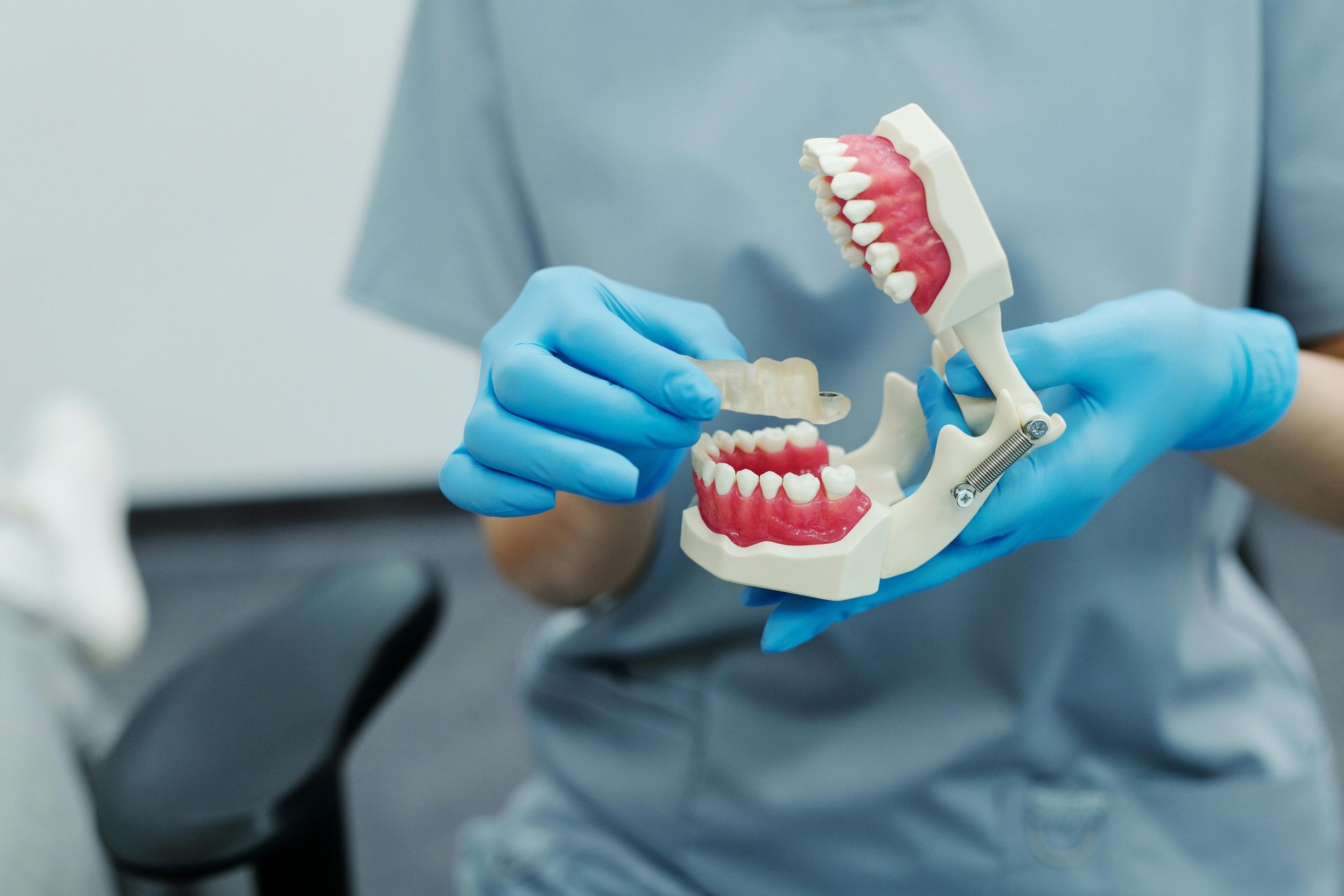What’s the Difference Between a Dental Assistant and Dental Hygienist?
What’s the difference between a dental assistant and dental hygienist? Explore detailed career outlook to find the right dental path for you.
CAREER
2/15/20255 min read

Dental Assistant vs Dental Hygienist
Dental assistants and dental hygienists are both important members of a dental team, but their jobs and qualifications are not the same.
If you're thinking about a dental career, you must be aware of these differences to be able to make the right choice.
Are you more interested in helping with procedures and front-office work, perhaps starting right after high school? Or does the idea of independent patient care, like cleanings and administering injections, appeal to you, even if it requires more training?
This guide will help you answer these questions and see which job fits you best.
What Is a Dental Assistant?
Dental assistants are healthcare workers who support dentists, hygienists, and patients who have oral health conditions.
They handle administrative and clinical tasks to keep the dental office running smoothly. They schedule appointments and are often the first person patients interact with. When patients arrive, dental assistants manage check-ins, help patients feel comfortable, and get exam rooms ready.
Their clinical work varies by state and sometimes, also includes helping during procedures or doing specific tasks with supervision. After appointments, they schedule follow-ups, update patient records, process payments, and sterilize instruments while preparing the room for the next patient. They may also manage supplies and order more when needed.
What Is a Dental Hygienist?
Dental hygienists are healthcare professionals focused on patient care. Unlike assistants, they handle fewer administrative duties. They perform routine procedures like cleaning and polishing teeth, checking for oral diseases, taking X-rays, and teaching patients about oral health.
Hygienists often work independently and provide primary routine care. They are usually the first to see patients in the exam room, where they examine their teeth, gums, and jaw.
If no dentist's attention is needed, the hygienist completes all necessary maintenance: taking X-rays or impressions, removing plaque and tartar, or offering whitening treatments.
Hygienists also advise patients on diet, recommend oral hygiene products like toothbrushes and flossers, and discuss treatment plans with both patients and dentists.
How Do Dental Assistants and Dental Hygienists Compare?
Now, let's look at some important differences and similarities between dental assistants and dental hygienists.
Professional Skills
Despite the differences between their primary duties, dental assistants and dental hygienists share many important technical and interpersonal skills. Dental hygienists, due to their greater autonomy and involvement in treatment procedures, must excel in areas such as organization, time management, and patient empathy. Dental assistants, given their broader range of administrative responsibilities, have to be proficient in using computer applications.
There are several skills that are valuable for success in both professions:
Manual dexterity and precise movements
Careful attention to details
Understanding and responsiveness to patient needs
Maintaining a professional demeanor
Effective communication with patients and colleagues, both verbally and in writing
Well-developed organizational skills
Efficient use of time
Familiarity with computer systems
Compensation
Information gathered from Indeed suggests that dental assistants earn an average base salary around $74,525 per year. Dental hygienists often receive higher compensation, with an average annual salary closer to $106,640.
It's important to note that these figures can fluctuate based on several factors. Experience, educational background, additional certifications, specific skills, and the location of employment can all influence base salary. Both dental assistants and hygienists are also eligible for benefits such as health insurance coverage, discounts on dental services, retirement savings plans (e.g., 401(k)), life insurance, and paid time off.
Many dental practices also support the professional growth of their dental assistants and dental hygienists. This support can take the form of financial assistance for continuing education, specialized training, or professional certifications, and allow employees to take on more responsibilities within the practice.
Training and Credentials
The educational and credentialing requirements for dental hygienists and dental assistants vary from state to state. Some states do not mandate a specific educational degree for dental assistants, and require only a high school diploma or a General Educational Development (GED) certificate. Other states, on the other hand, mandate an associate's degree in dental assisting. In these cases, it is advisable to confirm that the program is accredited by the Commission on Dental Accreditation (CODA).
State regulations may also stipulate board certification from the Dental Assisting National Board (DANB). The DANB provides study resources and administers various examinations for national certification, state-specific certification, and assessments of knowledge-based competency.
Either way, dental hygienists require an associate’s degree in dental hygiene and generally face more stringent educational requirements than dental assistants. Their programs usually take three years to complete, are also more rigorous, and combine practical clinical experience with classroom instruction covering topics such as anatomy, biology, chemistry, and nutrition. All states require dental hygienists to obtain a license to practice within that state. Each state has a board of dental examiners that establishes the specific conditions for licensure.
Supplemental Qualifications
Both dental assistants and dental hygienists can pursue additional qualifications that may be preferred or required by some employers. For instance, certification in CPR from the American Red Cross is often a standard requirement for both professions. Dental hygienists can also become certified in the administration of topical and local anesthesia, which can upgrade their professional qualifications.
Employment Outlook
According to data from the U.S. Bureau of Labor Statistics (BLS), job opportunities for dental assistants are projected to grow by 8% between 2023 and 2033. This growth rate exceeds the average for all occupations during that period. The BLS also anticipates an 9% increase in job opportunities for dental hygienists during the same timeframe.
This indicates that both career paths offer long-term stability and a variety of employment opportunities. The BLS suggests that the growth in both fields is partly attributable to ongoing research demonstrating the connection between oral health and overall well-being. This research is expected to further increase the demand for dental services.
FAQs
1. Do you need a degree to be a dental assistant?
No, a degree isn't always required to be a dental assistant. Some states only need a high school diploma or General Educational Development (GED) certificate. Others may require an associate's degree in dental assisting. Check your state's regulations for specific requirements.
2. How much do dental assistants make an hour?
A dental assistant’s hourly pay varies based on location, experience, certifications, and job responsibilities. The national average is approximately $31 per hour, but this can range from about $15 to over $40.
3. Is dental assistant a good career?
Yes, dental assisting is a great career path if you enjoy working with people and have an interest in healthcare. It offers opportunities for patient interaction, hands-on clinical experience (depending on state regulations), and a stable job market. However, it's important to consider that the work can be physically demanding and may involve exposure to bodily fluids. Job satisfaction often depends on factors like work environment, salary, and opportunities for advancement.
4. What is the scope of practice for dental hygienists?
Dental hygienists provide preventive oral care. Their scope of practice includes cleaning teeth, examining for oral diseases, taking X-rays, and educating patients on oral hygiene. They may administer local anesthetic (depending on state regulations) and apply sealants. Some states allow expanded functions like placing temporary fillings. Hygienists work under the supervision of a dentist, though the level of supervision varies.
5. Can a dental hygienist become a dentist?
A dental hygienist cannot directly transition to being a dentist. Hygienists gain valuable oral healthcare experience, but the path to dentistry is distinct. A hygienist must earn a bachelor's degree, take the Dental Admission Test (DAT), and complete a Doctor of Dental Surgery (DDS) or Doctor of Dental Medicine (DMD) degree. This dental degree usually takes four years. Some dental schools might offer accelerated programs for those with healthcare backgrounds, but the complete dental degree remains a prerequisite.
Explore
Welcome to Stay Curious – the blog where questions never get old and answers are always a little bit unexpected. Here, we challenge the status quo, dig into the weird and wonderful, and offer insights that might just make you think, “Why didn’t I know this sooner?”
From quirky facts to deep dives into the everyday mysteries of life, we’re all about satisfying that itch for knowledge you didn’t even know you had.
So, go ahead—stay curious. We promise it’ll be worth your while. Or, you know, not.
Contribute
Learn
ask.staycurious@gmail.com
© 2025. All rights reserved.
We welcome guest posts on business, tech, travel, finance, lifestyle, career, relocation, and home improvement. Submissions must be original, unpublished (online), at least 800 words, and written in English.
Ready to contribute? Contact us with your ideas!
